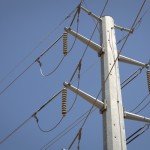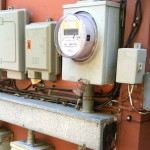Meet the Answer to Texas’ AC Problem: Demand Response
For years, Texas has struggled with how to solve its energy crunch: forecasts said not enough power plants were being built to meet the demands of a growing population and a booming state. But it turns out the state’s supplies are likely adequate. Despite all the growth in Texas, peak power demand hasn’t increased as fast as expected.
To understand why, it helps to start with those long, hot Texas summer afternoons just six months ago.
“Our electricity problems in Texas are almost entirely because of air conditioning in the afternoons in the summer,” said Michael Webber, Deputy Director of the Energy Institute at the University of Texas. “In fact, in the whole year we have an excess of electricity, except for a few hours, in a few weeks of the year.”
That problem with the Texas electricity market isn’t unique.
“Across the nation, we have something like a trillion dollars of capital in our power plants And we use those power plants on average 42 percent of the time,” Webber said. “This is incredibly irrational.”
But what if you could shift power use? What if you could incentivize people to use less during that time of peak demand? A relatively recent development could be the answer. It’s called ‘Demand Response.’
I was one of about two thousand people in Austin last summer who enrolled in a pilot program with Austin Energy (entirely on my own dime) called ‘Rush Hour Rewards.’ It works like this: Austin Energy gives participants $85 toward the purchase of a Nest smart thermostat. (Every bit helps, because the thermostat isn’t cheap: the latest model retails for $250.) When Austin Energy expects a period of high demand, they send an alert to Nest asking for a ‘Rush Hour.’ Nest then sends an alert to participants that the next afternoon their thermostat will be set higher so it uses less air conditioning.
Why focus on air conditioning? Because “heating and cooling is about half of most home’s energy use,” said Scott McGaraghan, Director of Business Development with Nest Labs. “Having the ability to control that biggest single energy user is going to have the greatest impact.”
The Nest thermostat doesn’t look like your typical home unit. It’s more akin to an iPod, which makes sense, because the same person designed both the iPod and the Nest. It’s a small, shiny metallic dial that senses when you’re at home and when you’re not. It learns your habits and programs itself, so no more messing around with pressing the right sequence of buttons. And you can control it all with a smartphone.
If you’re home, you can always override it and turn the AC back up during a ‘Rush Hour,’ but few do, according to Nest. The thermostat cools down your house ahead of the ‘Rush Hour’ as well. The curtailments are only on weekdays, and only for a few hours, and are never for more than three days in a row.
All in all, Austin Energy and Nest had a dozen ‘Rush Hours’ last summer. I hardly noticed the difference as a user, and McGaraghan with Nest says that’s the point: “The impacts in terms of comfort in your home are minimal, the impacts in terms of load on the grid — we’re reducing AC consumption by about half across this population of customers.”
But demand response doesn’t just save money for consumers and help keep the grid stable, it’s good for utilities and power companies, too.
“Those power companies have to pay really high prices in the afternoons to get you that power,” said Webber with UT. “So they do have some incentive to reduce your peak demand. Because they’re paying high prices and they can’t always pass those prices on to you. They might be losing money.”
Get customers to use less power during peak demand, and utilities and power providers can avoid having to buy costly extra power. They could even sell back into the market excess power that they’re saving through demand response.
Austin isn’t the only power provider in Texas doing this. One private power company, TXU Energy, is offering customers free power at night or on weekends in exchange for higher rates during the rest of the week. Others are paying customers for not using power during peak times. If you’re outside of Austin or San Antonio’s regulated utilities, you may qualify for an even sweeter deal from Reliant in Texas: a free Nest thermostat and further rebates for using less AC during summer peak demand.
While demand response has been part of the Texas market for years for industrial customers, it’s only now gaining traction in the residential sector. And that’s where it could really count. Air conditioning from residential and small commercial users “can run anywhere from 50 to 70 percent of the load” in Texas, according to Marita Mirzatuny with the Environmental Defense Fund in Texas. “It’s substantial.”
Along with increased energy efficiency in businesses and appliances, and some market tweaks, demand response is a significant factor in why power demand hasn’t grown as expected in the state.
“We’re experiencing overall an increase in consumption, because overall there are more people,” said Ken Anderson, a commissioner with the Public Utility Commission of Texas, which regulates the power market in the state. “But the growth of that consumption is what appears to be slowing.”
How to meet the demand for power in Texas, and how to properly forecast those demands, are questions currently stirring tensions at the commission.
Some lawmakers and consumer advocates, as well as Anderson, argue there is enough power. Revised forecasts that show demand growing at nearly half the rate that was expected appear to back them up.
Power generators, however, still want to change the current Texas market to be paid not just for the energy they produce, but also for simply being around, a proposal that could end up costing consumers billions. They appear to have the two other PUC commissioners, chair Donna Nelson and commissioner Brandy Marty, on their side.
The commission is supposed to hold a workshop on the issue this spring. If residential demand response is considered as a reliable, cheap source of future power ‘generation,’ it could bolster the argument put forward by those like Anderson that major tweaks to the Texas electricity market aren’t necessary at this time. “We don’t yet know the full impact,” Anderson said. “The [demand response] programs are relatively new. But they have real promise.”
The concept of demand response is taking off from the bottom up in Texas, within the market. Those developments weren’t the work of the commission, or the result of any guidance from the state legislature. Two bills to encourage more demand response in the state introduced during the last legislation did not survive the session.
“In Texas, we’ve seen demand response come out in little pieces, bit by bit,” said Mirzatuny with the Environmental Defense Fund. “There’s not one large effort under way.”
While the programs have started off small, they’re already having an impact. Over a hundred thousand people have signed up for TXU’s free nights or weekends program. In Austin, the city and Nest are expanding the ‘Rush Hour Rewards’ program, and already seeing results.
“By [this] summer, at the rate we’re growing right now, we will be able to displace a small- to medium-sized peaking power plant for the city of Austin,” said McGaraghan with Nest Labs.
Those peaking power plants can be expensive to run just a few times a year, and tend to be among the older and dirtier ones in the fleet, according to McGaraghan.
Constructing a new power plant to meet demand is also expensive. “The cost of compensating consumers for demand response isn’t going to be nearly as much as building a new fossil fuel plant,” said Mirzatunry with the Environmental Defense Fund.
And creating a market for saved energy, according to Webber of UT, not only reduces consumption, it could also create wealth. A lot of it. Instead of trading megawatts, you’re trading negawatts.
“I think the question of the day is, who is going to tap into this multi-billion, or multi-hundred-billion dollar market?” Webber said. “I bet its going to be some clever entrepreneur at some start-up. I bet its not going to be the existing utilities.”
Nest is expanding its demand response programs outside of Austin as well, with the goal of reaching the whole country. It got another boost earlier this month when it was bought by Google. The price tag? Over three billion dollars.






